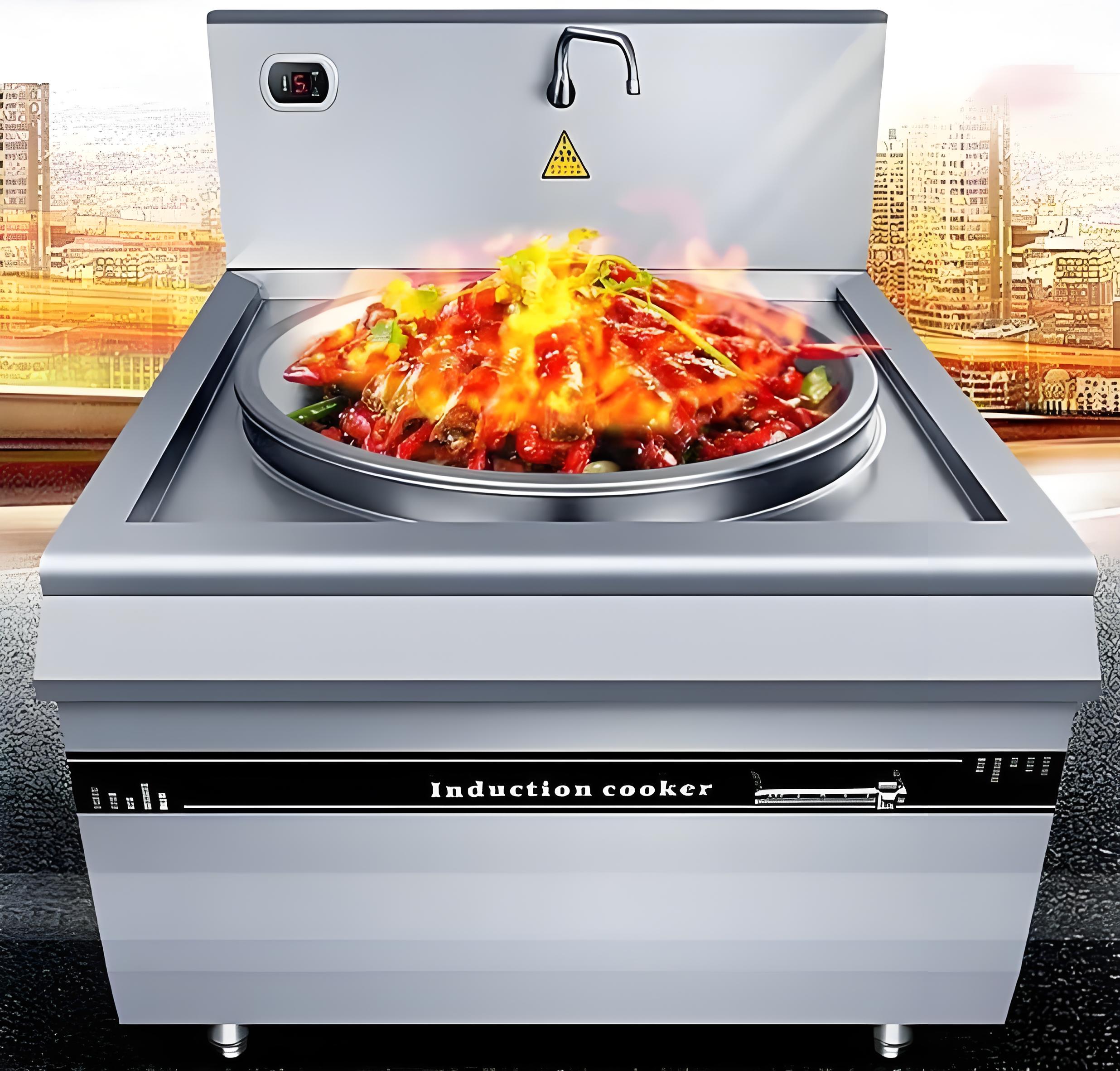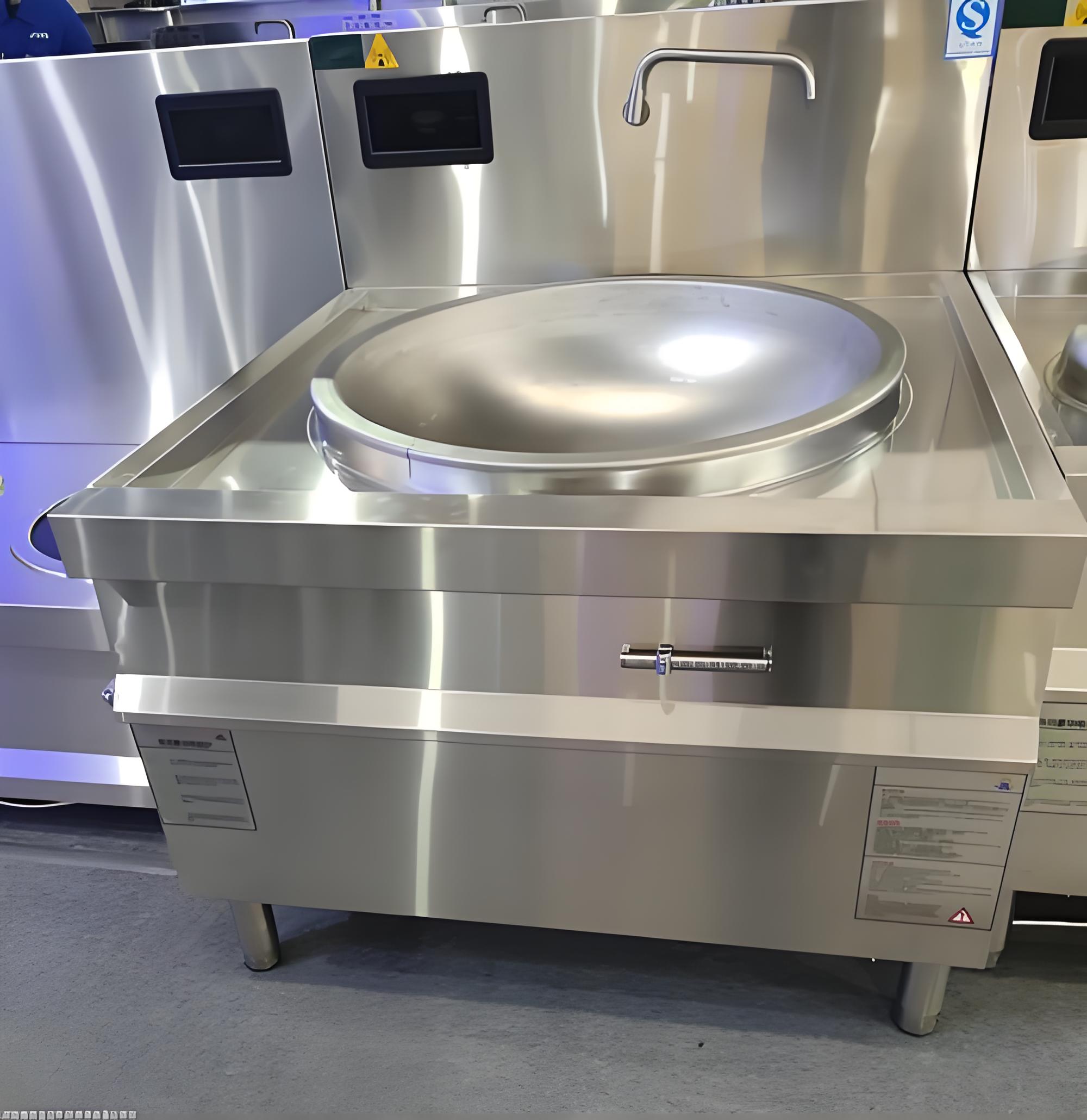As someone who’s spent years in the commercial kitchen equipment industry, I’ve seen firsthand how the right tools can make or break a business. One question that keeps popping up, especially with rising energy costs, is how to gauge the energy-saving performance of commercial induction cookers. These sleek, modern appliances promise efficiency, but how do you know if they’re delivering? In this article, I’ll walk you through a practical, hands-on approach to evaluate their energy-saving potential, drawing from my experience and industry insights. My goal is to help you make informed decisions that save money and align with your kitchen’s needs.

Understanding Why Energy Efficiency Matters
When I first started working with commercial kitchens, energy efficiency wasn’t always the top priority—durability and speed took the spotlight. But times have changed. With electricity bills climbing and sustainability becoming a core value for many businesses, choosing an energy-efficient induction cooker isn’t just about cutting costs; it’s about staying competitive and environmentally responsible. Induction cookers are often marketed as inherently efficient because they heat cookware directly through electromagnetic fields, bypassing the energy waste of traditional gas or electric stoves. But not all induction cookers are created equal, and their real-world performance depends on several factors.
So, how do you assess whether a commercial induction cooker lives up to its energy-saving claims? Let’s break it down into actionable steps, from understanding key metrics to real-world testing and long-term considerations.
Step 1: Check the Power Rating and Energy Consumption
The first thing I always look at when evaluating an induction cooker is its power rating, typically measured in kilowatts (kW). This tells you how much electricity the unit consumes at full capacity. But here’s the catch: a higher power rating doesn’t always mean higher energy use. Induction cookers are designed to deliver power efficiently, so a 3.5 kW unit might outperform a 2 kW unit in terms of cooking speed without necessarily using more energy over time.
To get a clearer picture, I recommend checking the energy consumption per hour (kWh). Manufacturers usually provide this in the product specs. For example, a cooker rated at 3 kW that runs at full power for an hour will consume 3 kWh. However, most commercial kitchens don’t run cookers at max power constantly, so real-world usage varies. Look for models with energy monitoring features—some modern units display real-time energy consumption, which is a game-changer for tracking efficiency.

Here’s a quick comparison of typical power ratings for commercial induction cookers:
Power Rating (kW) | Typical Use Case | Estimated kWh (1 hr, full power) | Best For |
|---|---|---|---|
1.8–2.5 kW | Small cafes, light cooking | 1.8–2.5 kWh | Low-volume kitchens |
3.0–3.5 kW | Mid-sized restaurants | 3.0–3.5 kWh | General-purpose cooking |
5.0 kW and above | High-volume kitchens | 5.0+ kWh | Heavy-duty tasks |
This table is a starting point, but always cross-reference with your kitchen’s specific needs. For instance, if you’re running a high-output kitchen, a 5 kW unit might save energy by cooking faster, reducing overall runtime.
Step 2: Evaluate Efficiency Through Induction Technology
One of the reasons I’m a fan of induction cookers is their energy transfer efficiency. Unlike gas stoves, which lose heat to the surrounding air, induction cookers transfer energy directly to the cookware, with efficiency rates often hitting 85–90% compared to 40–55% for gas or traditional electric stoves. But here’s where it gets tricky: not all induction cookers achieve this efficiency consistently.
To evaluate this, I look at the coil design and quality. High-quality coils ensure better magnetic field distribution, which translates to less energy waste. Check if the manufacturer specifies the coil material—copper coils are typically more efficient. Another factor is the pan detection system. Good induction cookers automatically shut off when no cookware is present, preventing energy loss. I once worked with a kitchen that saved 10% on their energy bill just by switching to a model with a responsive pan detection feature.
You can test this yourself by running a simple experiment: heat a standard pot of water (say, 2 liters) to boiling on different units and measure the time and energy used. Models with better energy transfer will boil water faster while consuming less power.
Step 3: Assess Control Features for Energy Optimization
In my experience, the difference between a good induction cooker and a great one often comes down to control features. Modern commercial induction cookers come with settings like precise temperature control, power level adjustments, and timers. These aren’t just bells and whistles—they directly impact energy use.
For example, a cooker with incremental power settings (e.g., 1–20 levels instead of just low/medium/high) lets you fine-tune the energy output to match the cooking task. I’ve seen kitchens overuse power simply because their cookers lacked granular controls, leading to unnecessary consumption. Similarly, timers with auto-shutoff prevent the unit from running longer than needed—a lifesaver in busy kitchens where staff might forget to turn off equipment.
When evaluating a model, ask yourself: Does it allow me to dial in exactly the power I need? Does it have features like eco modes or standby power reduction? These small details add up, especially in high-volume settings.

Step 4: Conduct Real-World Testing
Specs and features are great, but nothing beats real-world testing. When I consult for restaurants, I always push for a trial period with any new equipment. Here’s how I approach testing an induction cooker’s energy-saving performance:
Baseline Measurement: Use an energy meter (available for $20–50 online) to measure the cooker’s actual kWh consumption during typical tasks, like simmering sauces or frying proteins. Compare this to the manufacturer’s claims.
Cook-Off Test: Prepare a standard dish (e.g., a 5-liter batch of soup) on different cookers and record the time and energy used. Faster cooking with lower energy consumption points to better efficiency.
Duty Cycle Analysis: Monitor how often the cooker runs at full power versus lower settings during a typical shift. Models that maintain efficiency at lower power levels are often better for energy savings.
I remember working with a mid-sized restaurant that tested two induction cookers side by side. One was a budget model, and the other was a premium unit with advanced controls. The premium unit used 15% less energy for the same dishes, paying for its higher upfront cost within a year.
Step 5: Consider Long-Term Factors
Energy efficiency isn’t just about the cooker’s performance today—it’s about how it holds up over time. I’ve seen too many kitchens buy cheap units only to face higher energy bills and repair costs down the line. Here are some long-term factors to consider:
Durability: A well-built cooker with high-quality components (like robust coils and electronics) maintains its efficiency longer. Check warranties and read reviews from other commercial users.
Maintenance: Induction cookers are low-maintenance compared to gas stoves, but dirty or damaged cooking surfaces can reduce efficiency. Look for models with easy-to-clean surfaces and replaceable parts.

Compatibility with Cookware: Induction cookers require ferromagnetic cookware (like cast iron or certain stainless steels). Using incompatible or low-quality pans can lead to energy waste. I always advise kitchens to invest in high-quality induction-ready cookware to maximize efficiency.
Step 6: Compare Energy Costs to Other Cooking Methods
To truly understand an induction cooker’s energy-saving potential, I compare it to other cooking methods. Here’s a rough breakdown based on my experience and industry data:
Cooking Method | Energy Efficiency | Average Cost per kWh (USD) | Notes |
|---|---|---|---|
Induction | 85–90% | $0.10–0.15 | Fast, precise, minimal heat loss |
Gas | 40–55% | $0.05–0.10 (gas equivalent) | Heat loss to air, slower response |
Traditional Electric | 70–80% | $0.12–0.18 | Slower heating, moderate efficiency |
Note: Costs vary by region and energy provider. Check your local rates for accurate comparisons.
In one kitchen I worked with, switching from gas to induction reduced their energy costs by 20% annually, even though electricity was pricier per unit than gas. The key was the induction cooker’s ability to minimize waste and cook faster.
Step 7: Factor in Operational Context
No two kitchens are the same, and an induction cooker’s energy-saving performance depends on how it’s used. For example:
High-Volume Kitchens: If you’re constantly cooking at high power, a high-wattage unit with fast heat-up times might save energy by reducing cooking duration.
Small Cafes: Lower-wattage units with precise controls are often more efficient for intermittent use.
Menu Type: If your menu involves a lot of simmering or low-heat cooking, prioritize models with efficient low-power modes.
I once advised a small cafe that was struggling with high energy bills. They were using a 5 kW induction cooker for light tasks like making sandwiches and soups. Switching to a 2.5 kW unit with better low-power efficiency cut their energy use by 30% without affecting output.
My Personal Take: Balancing Cost and Performance
After years in the industry, I’ve learned that energy efficiency is about more than just numbers—it’s about finding the right fit for your kitchen. A super-efficient cooker that’s too powerful for your needs is just as wasteful as an underperforming one. My advice? Start by mapping out your kitchen’s cooking patterns and energy goals. Then, use the steps above to narrow down your options. Don’t shy away from investing in a higher-quality unit if the data supports it—the upfront cost often pays off in energy savings and reliability.
One of my favorite moments was helping a family-owned restaurant transition to induction. They were skeptical at first, worried about the learning curve and costs. But after a month of testing and tweaking their setup, they not only cut their energy bills but also improved their kitchen’s workflow. Seeing their excitement was a reminder of why I love this work—it’s about making a real difference, one kitchen at a time.

Related Questions and Answers
Q: Are induction cookers always more energy-efficient than gas?
A: In most cases, yes. Induction cookers typically achieve 85–90% energy efficiency, compared to 40–55% for gas. However, the cost-effectiveness depends on your local electricity and gas prices. Run a cost comparison using your utility rates to confirm.
Q: How can I tell if my cookware is induction-compatible?
A: Test it with a magnet—if it sticks firmly to the bottom of the pan, it’s induction-ready. Materials like cast iron and certain stainless steels work best. Avoid aluminum, copper, or glass unless they have an induction-compatible base.
Q: Do energy-saving features like timers really make a difference?
A: Absolutely. Timers and auto-shutoff features prevent unnecessary energy use, especially in busy kitchens. In my experience, kitchens using these features can save 5–15% on energy costs.
Q: Can I trust manufacturer claims about energy efficiency?
A: Treat them as a starting point, not gospel. Always verify with real-world testing or third-party reviews. Energy meters are a cheap and reliable way to check actual consumption.
Q: Is it worth upgrading to a more expensive induction cooker?
A: If the unit offers better efficiency, durability, and features tailored to your kitchen, it’s often worth it. Calculate the payback period based on energy savings to make an informed decision.




